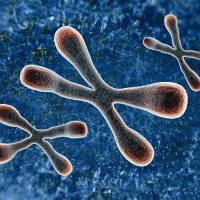Findings from a recent study show significant exercise is tied to nearly a decade of slower cell aging. Highly active individuals enjoy the benefits of a younger-feeling body. The study details were recently published in the popular medical journal Preventive Medicine.
The Aging Problem
Though scientists far and wide have been looking for a way to halt the human aging process, none have succeeded. Sure, there are plenty of anti-aging creams on the market yet they merely improve the appearance and feel of skin.
Brigham Young University researchers may have pinpointed the best way to mitigate the aging process. Their research shows it might be possible to slow aging at the cellular level. However, slowing this type of aging will require plenty of hard work. Those who are willing to engage in demanding exercise can slow their cellular aging level.
Though one’s true age might be 60, it does not mean that his body is 60 years old in a biological sense. Consider individuals who seem much younger than their true age. These individuals are likely highly physically active. BYU researchers have determined such heightened levels of physical activity minimize the biological aging process within the body.
Study Details
The BYU research team determined individuals who engaged in demanding physical activity reaped the many benefits of elongated telomeres. Those who live comparably sedentary lifestyles have significantly shorter telomeres. It is interesting to note those who are moderately active have shorter telomeres than those who engage in high levels of exercise on a regular basis.
Telomeres are best described as the protein endcaps on chromosomes within the human body. Telomeres are basically akin to the body’s biological clock. They are strongly tied to age. Every time a cell within the human body replicates, a small portion of these endpoints is lost. As a result, the aging process gradually shrinks telomeres.
Data from nearly 6,000 adults who engaged in the CDC’s National Health and Nutrition Examination Survey was analyzed for the study. This survey is revered as it is one of the few indexes that provides study subjects’ telomere length. The index even includes information for 62 activities subjects may have participated in across 30 days. This data was also analyzed to accurately gauge subjects’ levels of exercise.
Results Details
Adults who consistently engage in demanding exercises have telomeres with a biological aging boost of nine years versus those who live comparably idle lifestyles. Those who engage in high levels of physical activity enjoy a seven-year advantage over those who engage in a moderate level of physical activity. In order to be considered highly active, a woman must jog for half an hour five days per week. A man is considered to be highly active if he engages in 40 minutes of jogging five days per week. This means biological aging cannot be significantly slowed if one engages in minimal or even a moderate amount of exercise.
Sedentary individuals had the shortest telomeres, with 140 fewer base pairs at the endpoints of their telomeres than those who were consistently active. Yet there was no meaningful difference in telomere length between individuals with a low/moderate level of physical activity and those who were completely sedentary.
The Mystery of Lengthening Telomeres Through Exercise
The specific mechanism responsible for the preservation of telomeres resulting from exercise is unknown. Researchers believe the mechanism might be connected to a combination of inflammation and oxidative stress. Prior studies have determined telomere length is tied to these two factors. Furthermore, it is known that physical activity can suppress oxidative stress and inflammation as time progresses.




